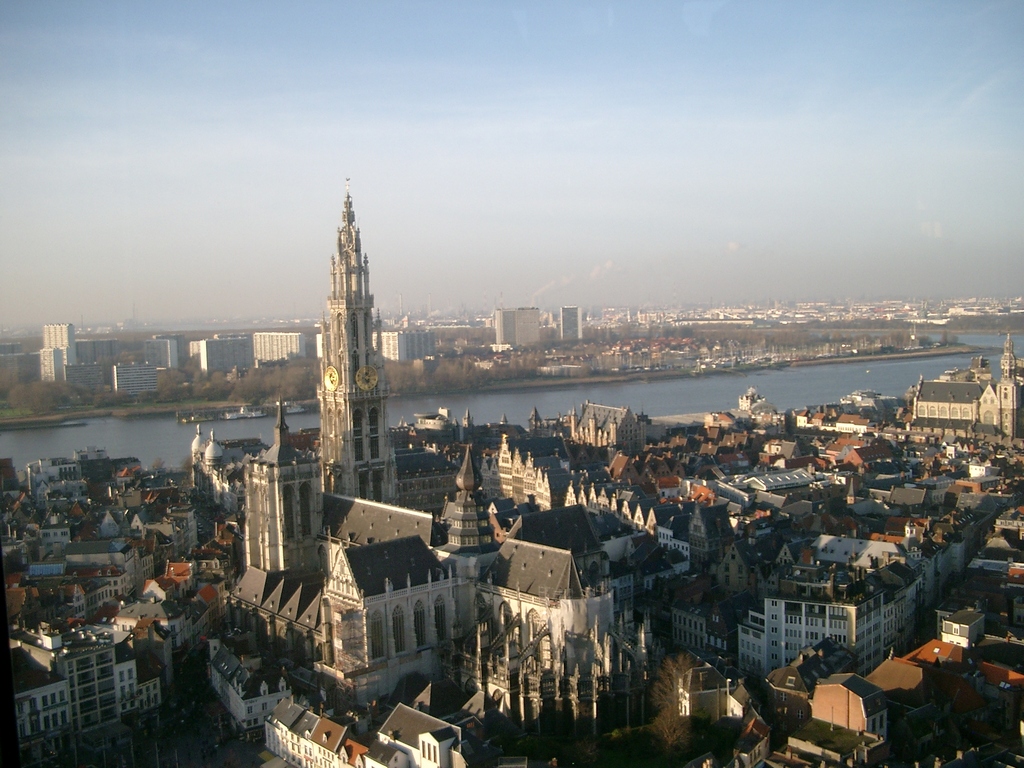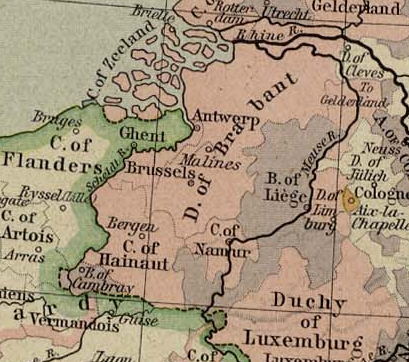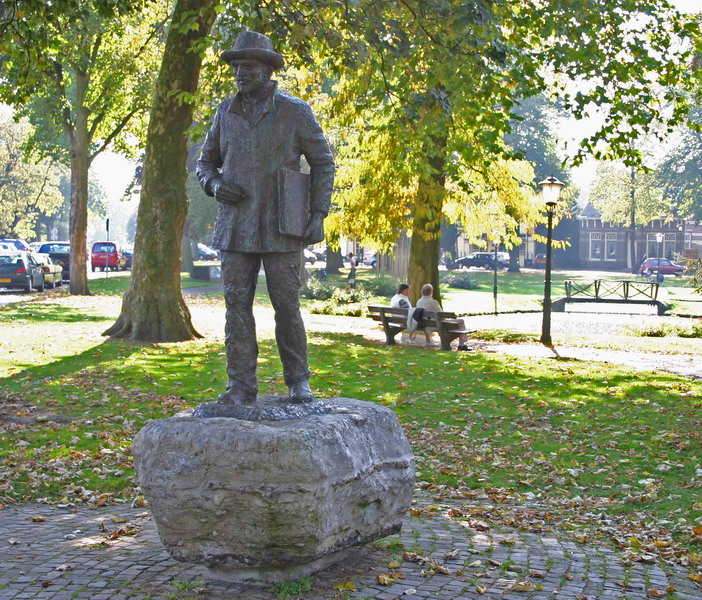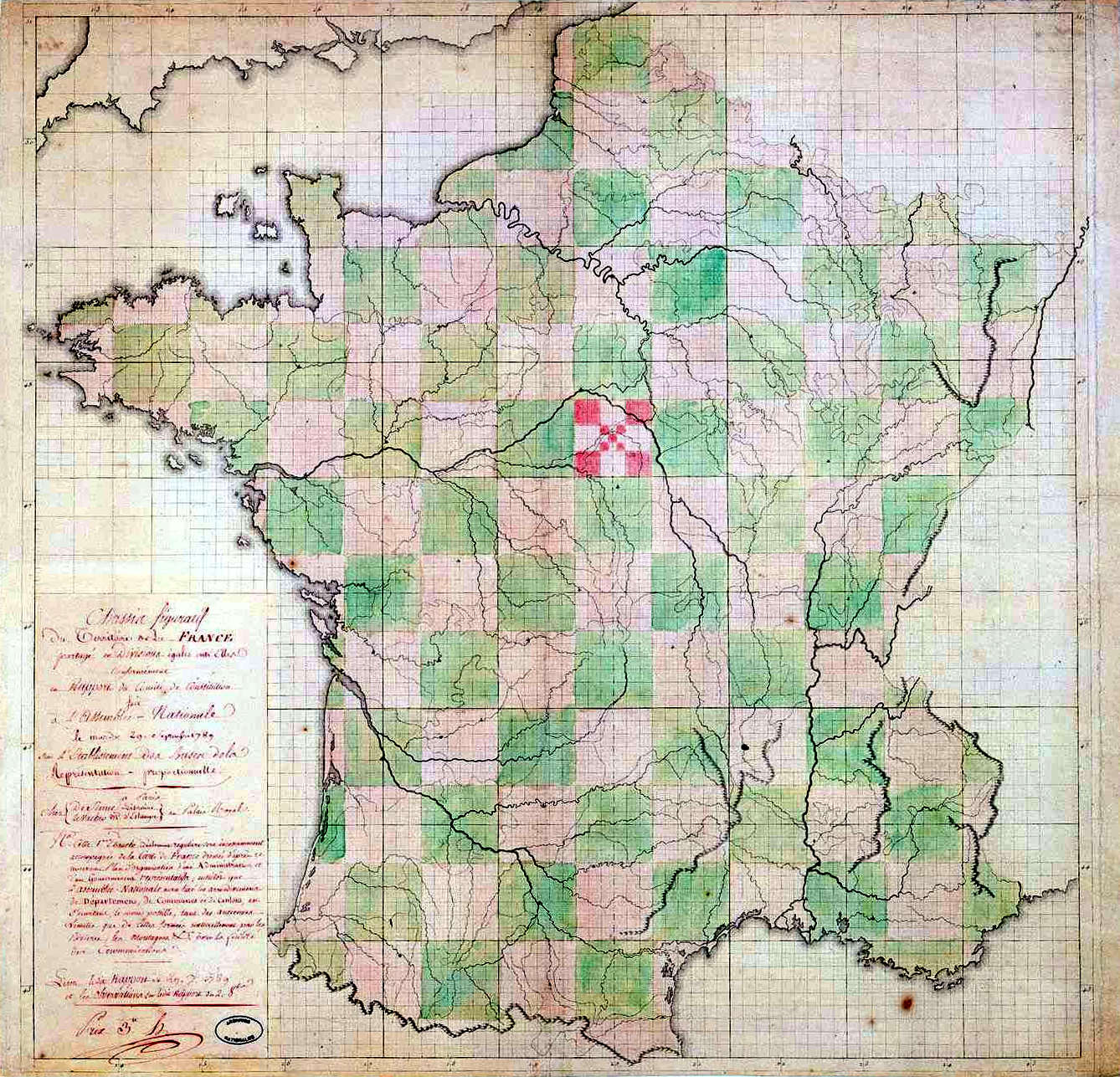|
Deux-Nèthes
Deux-Nèthes (, ) was a department of the First French Republic and of the First French Empire in present-day Belgium and the Netherlands. It was named after two branches of the river Nete (Grote Nete and Kleine Nete). The southern part of its territory corresponds more or less with the present-day Belgian province of Antwerp. It was created on 1 October 1795, when the Austrian Netherlands were officially annexed by the French Republic. Its territory was the northern part of the former duchy of Brabant. After the annexation of the Kingdom of Holland in 1810, the department was expanded with the western half of the present-day Dutch province of North Brabant, itself historically part of the Duchy of Brabant. The Chef-lieu of the department was Antwerp (''Anvers'' in French). The department was subdivided into the following four arrondissements and cantons (with French names): * Anvers: Anvers (4 cantons), Brecht, Ekeren, Kontich, Wilrijk and Zandhoven. * Bréda: B ... [...More Info...] [...Related Items...] OR: [Wikipedia] [Google] [Baidu] |
Duchy Of Brabant
The Duchy of Brabant, a Imperial State, state of the Holy Roman Empire, was established in 1183. It developed from the Landgraviate of Brabant of 1085–1183, and formed the heart of the historic Low Countries. The Duchy comprised part of the Burgundian Netherlands from 1430 and of the Habsburg Netherlands from 1482, until it was partitioned after the Dutch revolt of 1566–1648. The 1648 Peace of Westphalia ceded present-day North Brabant () to the Generality Lands of the Dutch Republic, while the reduced duchy remained part of the Habsburg Netherlands until French First Republic , French Revolutionary forces conquered it in 1794 — a change recognized by the Treaty of Campo Formio in 1797. Today all the duchy's former territories, apart from exclaves, are in Belgium except for the Dutch province of North Brabant. Geography The Duchy of Brabant (adjective: ''wikt:Brabantian, Brabantian'' or ''wikt:Brabantine, Brabantine'') was historically divided into four parts, each with ... [...More Info...] [...Related Items...] OR: [Wikipedia] [Google] [Baidu] |
Antwerp (province)
Antwerp Province (; ; ; ), between 1815 and 1830 known as Central Brabant ( , , ), is the northernmost province both of the Flemish Region, also called Flanders, and of Belgium. It borders on the North Brabant province of the Netherlands to the north and the Belgian provinces of Limburg, Flemish Brabant and East Flanders. Its capital is Antwerp, which includes the Port of Antwerp, the second-largest seaport in Europe. It has an area of , and with over 1.92 million inhabitants as of January 2024, is the country's most populous province. The province consists of three arrondissements: Antwerp, Mechelen and Turnhout. The eastern part of the province comprises the main part of the Campine region. History During the early Middle Ages the region was part of the Frankish Empire, which was divided into several '' pagi''. The territory of the present-day province belonged to several ''pagi'' of which the region around what would become the city of Antwerp belonged to the Pagus Rene ... [...More Info...] [...Related Items...] OR: [Wikipedia] [Google] [Baidu] |
Duchy Of Brabant
The Duchy of Brabant, a Imperial State, state of the Holy Roman Empire, was established in 1183. It developed from the Landgraviate of Brabant of 1085–1183, and formed the heart of the historic Low Countries. The Duchy comprised part of the Burgundian Netherlands from 1430 and of the Habsburg Netherlands from 1482, until it was partitioned after the Dutch revolt of 1566–1648. The 1648 Peace of Westphalia ceded present-day North Brabant () to the Generality Lands of the Dutch Republic, while the reduced duchy remained part of the Habsburg Netherlands until French First Republic , French Revolutionary forces conquered it in 1794 — a change recognized by the Treaty of Campo Formio in 1797. Today all the duchy's former territories, apart from exclaves, are in Belgium except for the Dutch province of North Brabant. Geography The Duchy of Brabant (adjective: ''wikt:Brabantian, Brabantian'' or ''wikt:Brabantine, Brabantine'') was historically divided into four parts, each with ... [...More Info...] [...Related Items...] OR: [Wikipedia] [Google] [Baidu] |
North Brabant
North Brabant ( ; ), also unofficially called Brabant, Dutch Brabant or Hollandic Brabant, is a province in the south of the Netherlands. It borders the provinces of South Holland and Gelderland to the north, Limburg to the east, Zeeland to the west, and the Flemish provinces of Antwerp and Limburg to the south. The northern border follows the Meuse westward to its mouth in the Hollands Diep strait, part of the Rhine–Meuse–Scheldt delta. North Brabant had a population of about 2,626,000 as of January 2023. Major cities in North Brabant are Eindhoven (pop. 231,642), Tilburg (pop. 217,259), Breda (pop. 183,873), its provincial capital 's-Hertogenbosch (pop. 154,205), and Helmond (pop. 94,967) History The Duchy of Brabant was a state of the Holy Roman Empire established in 1183 or 1190. It developed from the Landgraviate of Brabant and formed the heart of the historic Low Countries, part of the Burgundian Netherlands from 1430 and of the Habsburg Netherlands f ... [...More Info...] [...Related Items...] OR: [Wikipedia] [Google] [Baidu] |
Departments Of France
In the administrative divisions of France, the department (, ) is one of the three levels of government under the national level ("territorial collectivity, territorial collectivities"), between the Regions of France, administrative regions and the Communes of France, communes. There are a total of 101 departments, consisting of ninety-six departments in metropolitan France, and five Overseas department and region, overseas departments, which are also classified as overseas regions. Departments are further subdivided into 333 Arrondissements of France, arrondissements and 2,054 Cantons of France, cantons (as of 2023). These last two levels of government have no political autonomy, instead serving as the administrative basis for the local organisation of police, fire departments, and, in certain cases, elections. Each department is administered by an elected body called a departmental council (France), departmental council ( , ). From 1800 to April 2015, these were called gene ... [...More Info...] [...Related Items...] OR: [Wikipedia] [Google] [Baidu] |
Nete (river)
The Nete (; , ) is a river in northern Belgium, right tributary of the Rupel. It flows through the Belgian province of Antwerp. It is formed in Lier, at the confluence of the rivers Grote Nete and Kleine Nete. It flows through Duffel and joins the river Dijle in Rumst to form the river Rupel. It drains nearly 60% of Antwerp province. Grote Nete The Grote Nete ''(Big Nete)'' river is about 85 km longIngrid Baten & Willy HuybrechtsDe historische bedding van de bevaarbare Nete 2002, page 7 and has its source near Hechtel in the Belgian province of Limburg. It flows in a western direction along the towns Geel, Westerlo and Heist-op-den-Berg before joining the Kleine Nete in Lier. Its main tributaries are the near Geel, the near Westerlo, and the near Herenthout. Kleine Nete The Kleine Nete ''(Small Nete)'' river is about 50 km long and has its source near Retie in the Belgian province of Antwerp. North of the Grote Nete flows in south-western direction along the towns Heren ... [...More Info...] [...Related Items...] OR: [Wikipedia] [Google] [Baidu] |
Departments Of France
In the administrative divisions of France, the department (, ) is one of the three levels of government under the national level ("territorial collectivity, territorial collectivities"), between the Regions of France, administrative regions and the Communes of France, communes. There are a total of 101 departments, consisting of ninety-six departments in metropolitan France, and five Overseas department and region, overseas departments, which are also classified as overseas regions. Departments are further subdivided into 333 Arrondissements of France, arrondissements and 2,054 Cantons of France, cantons (as of 2023). These last two levels of government have no political autonomy, instead serving as the administrative basis for the local organisation of police, fire departments, and, in certain cases, elections. Each department is administered by an elected body called a departmental council (France), departmental council ( , ). From 1800 to April 2015, these were called gene ... [...More Info...] [...Related Items...] OR: [Wikipedia] [Google] [Baidu] |
Breda
Breda ( , , , ) is a List of cities in the Netherlands by province, city and List of municipalities of the Netherlands, municipality in the southern part of the Netherlands, located in the Provinces of the Netherlands, province of North Brabant. The name derived from ''brede Aa'' ('wide Aa' or 'broad Aa') and refers to the confluence of the rivers Mark (Dintel), Mark and Aa of Weerijs, Aa. Breda has 185,072 inhabitants on 13 September 2022 and is part of the Brabantse Stedenrij; it is the tenth largest city/municipality in the country, and the third largest in North Brabant after Eindhoven and Tilburg. It is equidistant from Rotterdam and Antwerp. As a Defensive wall, fortified city, it was of strategic military and political significance. Although a direct fiefdom of the Holy Roman Emperor, the city obtained a City rights in the Low Countries, municipal charter; the acquisition of Breda, through marriage, by the House of Orange-Nassau, House of Nassau ensured that Breda would be ... [...More Info...] [...Related Items...] OR: [Wikipedia] [Google] [Baidu] |
Bergen Op Zoom
Bergen op Zoom (; called ''Berrege'' in the Brabantian dialect, local dialect) is a List of cities in the Netherlands by province, city and Municipalities of the Netherlands, municipality in southwestern Netherlands. It is located in the Provinces of the Netherlands, province of North Brabant, at the provincial border with Zeeland. In 2025, the municipality had a population of 70,216. Etymology The city was built on a site where two types of soil meet: sandy soil and marine clay. The sandy soil pushed against the marine clay, accumulating and forming hills over several centuries. People called those hills the ''Brabantse Wal'', literally meaning "ramparts of Brabant". ''Zoom'' refers to the border of these ramparts and ''bergen'' in Dutch means mountains or hills. The name has nothing to do with the little channel, the Zoom, which was later built through Bergen op Zoom. History Bergen op Zoom was granted City rights in the Low Countries, city status probably in 1212. In 128 ... [...More Info...] [...Related Items...] OR: [Wikipedia] [Google] [Baidu] |
Breda (Netherlands)
Breda ( , , , ) is a city and municipality in the southern part of the Netherlands, located in the province of North Brabant. The name derived from ''brede Aa'' ('wide Aa' or 'broad Aa') and refers to the confluence of the rivers Mark and Aa. Breda has 185,072 inhabitants on 13 September 2022 and is part of the Brabantse Stedenrij; it is the tenth largest city/municipality in the country, and the third largest in North Brabant after Eindhoven and Tilburg. It is equidistant from Rotterdam and Antwerp. As a fortified city, it was of strategic military and political significance. Although a direct fiefdom of the Holy Roman Emperor, the city obtained a municipal charter; the acquisition of Breda, through marriage, by the House of Nassau ensured that Breda would be at the center of political and social life in the Low Countries. Breda had a population of in ; the metropolitan area had a population of . History In the 11th century, Breda was a direct fief of the Holy Roman Emper ... [...More Info...] [...Related Items...] OR: [Wikipedia] [Google] [Baidu] |
Zandhoven
Zandhoven () is a municipality in the Belgian province of Antwerp. The municipality comprises the villages of , , , and Zandhoven proper. In 2021, Zandhoven had a population of 13,124. The total area is 40.10 km2. Sports Women's volleyball Volleyball is a team sport in which two teams of six players are separated by a net. Each team tries to score points by grounding a ball on the other team's court under organized rules. It has been a part of the official program of the Summ ... club VBC Zandhoven plays at the highest level of the Belgian league pyramid. References External links * *Official website Municipalities of Antwerp Province Populated places in Antwerp Province {{Antwerp-geo-stub ... [...More Info...] [...Related Items...] OR: [Wikipedia] [Google] [Baidu] |
Wilrijk
Wilrijk (; former, original spelling: ''Wilrijck'') is a district of the municipality and city of Antwerp in the Belgian province of Antwerp. Wilrijk had been a separate municipality before January 1, 1983; the enlarged municipality of Antwerp was decentralized in 2000 and Wilrijk became one of the city's nine districts. This suburb is also known as the Goat village, because of its Goat parade. Every five years, this parade attracts many tourists. The next one will be held in 2025. Overview Although it is now part of the city of Antwerp, Wilrijk has kept its own distinct atmosphere. A mixture of modern and older neighbourhoods, this suburb has a good balance between residential, commercial and industrial activities. Its facilities for sport and recreation in a green environment make it a desirable area in which to live. This area was already inhabited in 600 BC. This has been shown by the excavation of a Celtic burial site in Wilrijk, which is the oldest sign of civilization ye ... [...More Info...] [...Related Items...] OR: [Wikipedia] [Google] [Baidu] |








